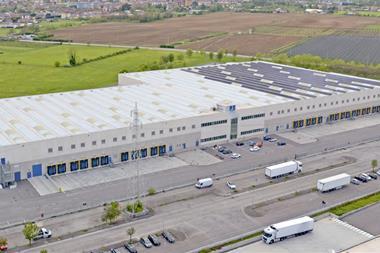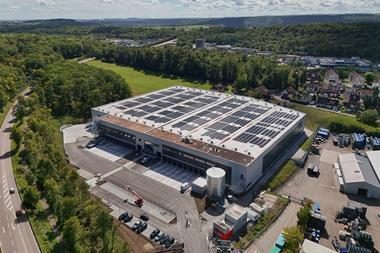The volume of capital flowing into Germany’s listed real estate sector rose 29% last year, according to a new study.
Barkow Consulting said €4.6bn was placed in listed real estate last year, marking a second consecutive year of growth.
Barkow’s report looks at inflows of capital into listed real estate, institutional open-ended funds, public open-ended funds and closed-ended funds.
Overall, indirect real estate accounted for net capital inflows fell 20% year-on-year to €13.8bn. Institutional open-ended funds remained the most important contributor to indirect real estate investment for the sixth consecutive year, accounting for 49% of net inflows.
The increase in investment in listed real estate in Germany could be seen as evidence of growing appetite for what is widely seen as the euro-zone’s safest market.
“The demand is there,” Peter Barkow, managing director of Barkow Consulting, told IP Real Estate. “Real estate is a hot topic and Germany is seen as the anchor of the euro-zone.
“What’s struck us most is how important listed real estate is to Germany’s wider equity capital markets activity.”
Barkow said the market is ”still waiting for large insurance funds and pensions to invest in German listed real estate”.
He added that while domestic asset managers usually have a “home bias”, the situation in Germany’s listed real estate sector has been “quite the contrary”.
The country’s listed sector, which has tried to encourage more real estate investment trusts (REITs), is also largely the domain of residential-focused companies.
“The (German listed) sector is dominated by residential investment companies,” Barkow said. “That’s unusual across Europe.
“The commercial side is still very small.”
Barkow said the listing of Berlin-based TLG Immobilien, which invests in the hotel, office and retail sectors, had been the highlight, with little activity otherwise in the listed commercial real estate sector.
The study’s figures do not include Immofinanz’s spin-off of Buwog or Adler Real Estate’s takeover of Estavis. Deutsche Annington’s bid for GAGFAH is also outside of the study, as is the merger of Deutsche Wohnen and GSW. Barkow said all four transactions were neutral on a net-new-money basis and structured as share-for-share offerings or carve outs.
The report said that despite a lack of data on closed-ended funds, last year was likely to have seen around €600m come from retail investors.
”These numbers continue to reflect a difficult issuance environment in the face of increased regulatory requirements,” the report said.
Institutional closed-end funds, the report said, show more promise, with market estimates at around €900m.
The Deutsche Bundesbank is due to publish numbers in May. Barkow’s report said last year was likely to have been the ”worst year ever” for both retail and institutional closed-ended funds.
”There are still funds open for inflows, which are doing very well, but frozen funds have impacted overall figures,” Barkow said.
Net inflows into public open-ended funds were, the report said, ”very light”, totalling €900m.











